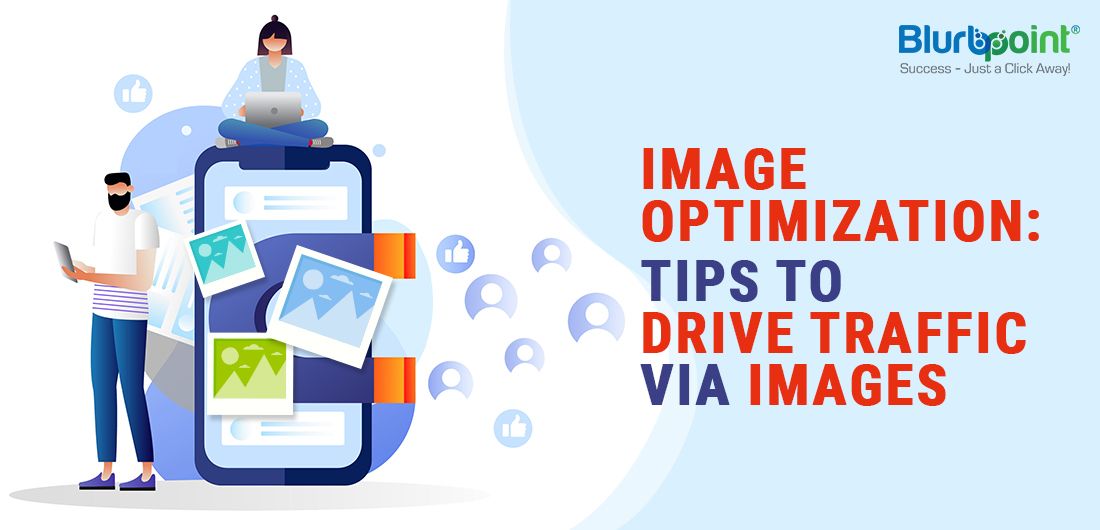GET A FREE CONSULTATION



Posted by Sanket Patel
July 14, 2020
Digital marketing is a vast universe. Even though every marketing strategy is built differently to work on the different wants and needs of every business, the end goal remains the same – a higher CTR on Google. Whether it be e process.
Simply put, image optimization is the process of reducing the overall file size of the images present on your website and blogs to ensure that the loading time of your website isn’t slow. Image optimization can also be referred to as image SEO and this particular part of your digital marketing strategy mainly works on ranking your images on Google whilst also ensuring an enjoyable user experience.
Images are important – not only do they help in making a piece of text relatively easier to read, but they also tend to add a hint of colour to what otherwise seems to be a blank slate of black and white.
Over the years, images have helped in conveying messages that would otherwise seem treacherously extensive. Many a time, images are capable of communicating what couldn’t be communicated through words. Adding in an image to your website and articles can help make them much more attractive to visitors, giving them a reason to stay. We even have a few statistics to help prove the importance of image optimization to you:
Every marketing strategy holds its set of requirements to create an effective impact. From content marketing to image optimization, there are several tips you can follow to drive traffic to your website. For instance, we’ve built the following list of tips to help you optimize your images appropriately on your website:
1. Choosing the Correct Format
Every image format is important in its way and although decoding your images to understand the ideal format for your website can seem to be extremely confusing in the beginning, once you understand their roles, you’ll be able to optimize all your images easily.
2. Don’t only use stock images
Even though stock photography is relatively easy to access, they aren’t the most recommended form of image use. After all, you wouldn’t want your website to end up looking like a mix of sample images and empty content now, would you? Generic content can be accessed anywhere and at any time, make yours unique and allow it to be set apart from the rest.
Although stock images have been formatted and optimized for your image SEO beforehand, they will not have the same impact as an original, high-quality, well-optimized image.
3. Copyright Strikes Can Ruin Your Ranking on Google SERPs
Copyright conflict can turn out to be extremely harmful to your business in the long run. Surely, it’s important to use images that are of high quality and well-optimized, but if you choose to use an image you found on the internet, it’s important to ensure that you have permission from the owner of the image to avoid conflicts on a later date.
Even now, some companies are stuck under lawsuits of millions of dollars due to copyright infringement. If you want to completely avoid the possibility of landing under the copyright infringement law, it’s better to use websites that offer free-to-use images only (or original images!).
4. Never Forget the Value of a File Name
Metadata has grown to be a crucial part of SEO over the years. Although you might be tempted to upload your image under the name it already holds, following through with such activity will make you miss out on the opportunity of making the most out of your image upload.
For example, if you’re writing an article about hand sanitizers and upload your image under the file name “IMG_5589,” not only are you missing out on an opportunity to optimize your image, but you also end up losing out on a potential ranking. Renaming a file shouldn’t be too simple either since you need to figure out the keywords that stand in the competitive field and use them as the file name. Don’t use “sanitizer_1” or “sanitizer_2,” use a file name along the lines of “hand disinfectant” or “alcohol-based hand rub.”
5. Alt Text Helps You Crawl up Rankings
Alt tags or text are textual alternatives to the image file that you upload. It allows search engines to understand the image better, with a thorough outlook on what the image file is about. With the help of alt tags, search engines can place your content higher up on Google SERPs by understanding the user intent and behaviour during a search.
Moreover, if your website fails to load quickly while a user is accessing the website, alt text will be displayed alongside the image’s position to allow the customer to have a friendly experience even with the website buffer.